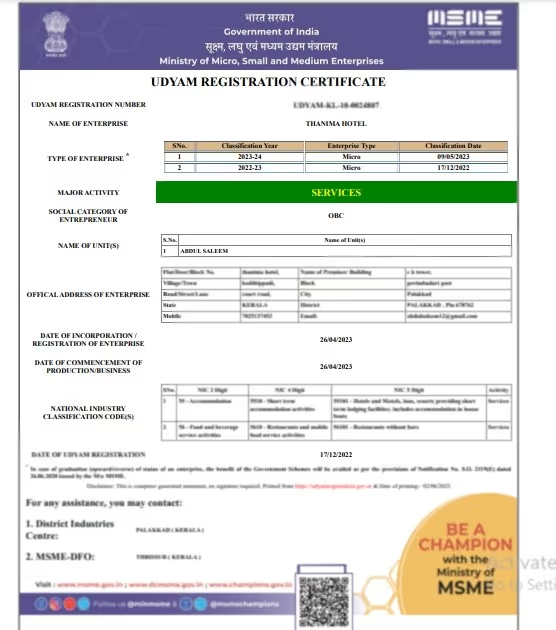As India's entrepreneurial ecosystem evolves, founders now have access to a range of legal business structures tailored to different growth stages and ownership goals. From sole proprietorships and partnerships to private limited companies and, more recently, One Person Companies (OPCs) and Limited Liability Partnerships (LLPs) are among the most popular.
While a One-Person Company (OPC) is ideal for solo entrepreneurs starting small, many founders later seek more flexibility, lower compliance, and shared ownership, making a Limited Liability Partnership (LLP) an attractive alternative.
If you’re planning to scale or bring in partners, converting your OPC to an LLP could be the right move. This blog walks you through the concept, legal framework, and procedure for converting an OPC to an LLP in India.
Table of Contents
Limited Liability Partnership (LLP)
An LLP is a hybrid business structure that combines the benefits of a company (limited liability) with the flexibility of a partnership. Some key features include:
- Minimum two partners required
- Liability of partners is limited to their contribution
- No minimum capital requirement
- Fewer compliance requirements than a company
- Separate legal identity from its partners
One Person Company (OPC)
Introduced under the Companies Act, 2013, an OPC allows a single individual to operate a corporate entity. It offers:
- Limited liability
- Separate legal identity
- Easier fundraising compared to a sole proprietorship
- Greater credibility in business dealings
However, OPCs face limitations like:
- Restrictions on fundraising
- Mandatory conversion if turnover exceeds ₹2 crore or capital exceeds ₹50 lakh
- Cannot have more than one member
Conversion of OPC to LLP
OPC conversion to LLP is governed by the Companies Act, 2013 and the Limited Liability Partnership Act, 2008. While direct provisions for OPC-to-LLP conversion are not explicitly provided, companies (including OPCs) can be converted into LLPs under Section 366 of the Companies Act and the Second Schedule of the LLP Act.
Understanding the Legal Provisions for Conversion of OPC to LLP
The legal path for converting an OPC to an LLP involves:
- Section 366 of the Companies Act, 2013 (deals with companies being converted into LLPs)
- Second Schedule of the LLP Act, 2008 (provides the procedure for such conversions)
- Form FiLLiP and Form 18 under the LLP Rules, 2009
Note: Prior approval from the Registrar of Companies (ROC) is mandatory.
Related Read: ROC Compliance Calendar for 2025–2026
Eligibility Conditions and Compliance Steps for Conversion
To be eligible for conversion:
- Before conversion, the OPC must have at least two shareholders (LLPs require a minimum of two partners).
- No active defaults in filing annual returns, income tax, or other statutory dues.
- All secured creditors (if any) must give their consent.
- The company should not have applied for winding up or struck-off status.
Compliance steps include:
- Holding a Board Meeting and passing a resolution for conversion
- Increasing the number of members/directors to meet LLP requirements
- Obtaining name approval through RUN–LLP or FiLLiP form
- Filing Form FiLLiP and Form 18 with ROC
- Executing an LLP Agreement within 30 days of incorporation
Looking to switch from OPC to LLP? Get professional help for a smooth and compliant business conversion with Razorpay Rize's LLP Registration Service.
Documents Furnished along with Form 18
Form 18 is the declaration for conversion and must be supported with:
- Board resolution for conversion
- Consent of all shareholders
- Statement of assets and liabilities certified by a CA
- List of creditors and their consent
- Latest income tax return acknowledgement
- Copy of PAN card and Aadhaar of all proposed partners
- Address proof of the registered office of the LLP
- NOC from the property owner (if rented office)
Procedure for Conversion of OPC to LLP
Here’s a step-by-step breakdown:
- Board Resolution: Approve the conversion plan and authorise directors to file the necessary forms.
- Increase Number of Members: Since an LLP requires at least two partners, the OPC must first induct another shareholder.
- DIN & DSC: Ensure all partners have a Director Identification Number (DIN) and Digital Signature Certificate (DSC).
- Name Approval: Apply for name reservation using RUN–LLP or through FiLLiP.
- Form FiLLiP Filing: File FiLLiP with ROC for incorporating the LLP.
- Attach Form 18: While filing FiLLiP, attach Form 18 with the required documents.
- Certificate of Incorporation: On approval, the ROC will issue a Certificate of Incorporation for the LLP.
- Execute LLP Agreement: Draft and file the LLP Agreement within 30 days.
- Apply for PAN, TAN & GST: Update statutory registrations with new LLP details.
- Close OPC Bank Account & Update Records: Close existing bank accounts of OPC and update stakeholders.
Frequently Asked Questions (FAQs)
Private Limited Company
(Pvt. Ltd.)
- Service-based businesses
- Businesses looking to issue shares
- Businesses seeking investment through equity-based funding
Limited Liability Partnership
(LLP)
- Professional services
- Firms seeking any capital contribution from Partners
- Firms sharing resources with limited liability
One Person Company
(OPC)
- Freelancers, Small-scale businesses
- Businesses looking for minimal compliance
- Businesses looking for single-ownership
Private Limited Company
(Pvt. Ltd.)
- Service-based businesses
- Businesses looking to issue shares
- Businesses seeking investment through equity-based funding
One Person Company
(OPC)
- Freelancers, Small-scale businesses
- Businesses looking for minimal compliance
- Businesses looking for single-ownership
Private Limited Company
(Pvt. Ltd.)
- Service-based businesses
- Businesses looking to issue shares
- Businesses seeking investment through equity-based funding
Limited Liability Partnership
(LLP)
- Professional services
- Firms seeking any capital contribution from Partners
- Firms sharing resources with limited liability
Frequently Asked Questions
Why convert an OPC into an LLP?
Converting to an LLP offers greater flexibility, allows multiple partners, reduces compliance burden, and enables easier capital infusion, making it suitable for scaling beyond a single founder.
Is it mandatory to get creditor consent for conversion?
Yes. Obtaining written consent from creditors is required, as their rights could be affected during the conversion process.
Can an OPC with outstanding debts be converted into an LLP?
Yes, but all creditors must be informed, and their no-objection certificates (NOCs) must be secured. The LLP will assume all debts and liabilities of the OPC post-conversion.
Will the new LLP retain the OPC’s assets and liabilities?
Yes. Upon conversion, all assets, liabilities, obligations, and agreements of the OPC automatically vest in the LLP.
Do tax implications arise during conversion?
If the conversion meets certain conditions under the Income Tax Act (e.g., continuity of business and ownership), it can be tax-neutral. Otherwise, capital gains tax or other liabilities may apply. It’s advisable to consult a tax expert.
%20to%20LLP%20in%20India.webp)

















